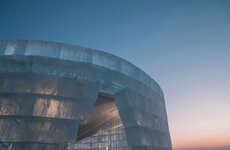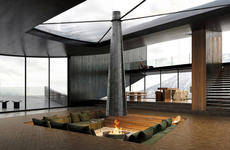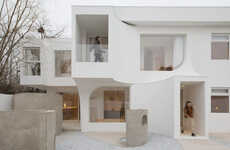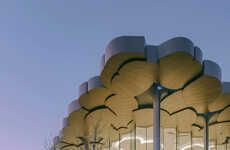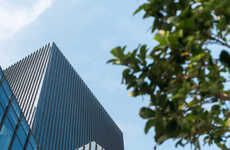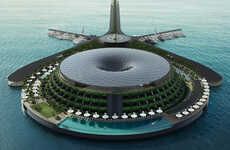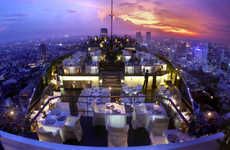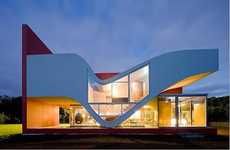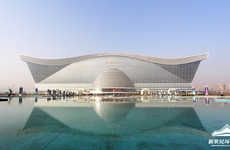
The Harbin Ice Hotel by LAVA is Beautiful and Enormous
Sarah Robson — July 1, 2012 — World
References: l-a-v-a.net & archiscene.net
The Harbin Ice Hotel by LAVA was inspired by quartz and icebergs. This beautiful design combines a contemporary model with a crystallized iceberg appearance that has a light transparent facade.
This building will be a hotel, retail and cultural centre for the centre in Harbin, China. Harbin is the 10th biggest city in China, and is the area is a huge business and communications distrct in North China. This ice tower is an enormous 530,000 square meters, and resembles an glacier city.
LAVA creates futuristic designs with socially and environmentally responsible technologies. Their designs include master-plans, urban centres, hotels, airports, pop up installations and more. This award-winning company has established a business full of creative minds, and have offices in Shanghai, Sydney, Abu Dhabi and Stuttgart.
This building will be a hotel, retail and cultural centre for the centre in Harbin, China. Harbin is the 10th biggest city in China, and is the area is a huge business and communications distrct in North China. This ice tower is an enormous 530,000 square meters, and resembles an glacier city.
LAVA creates futuristic designs with socially and environmentally responsible technologies. Their designs include master-plans, urban centres, hotels, airports, pop up installations and more. This award-winning company has established a business full of creative minds, and have offices in Shanghai, Sydney, Abu Dhabi and Stuttgart.
Trend Themes
1. Crystallized Iceberg Superstructures - The trend of incorporating crystallized iceberg appearances into architectural designs provides an opportunity for disruptive innovations in sustainable and visually stunning buildings.
2. Contemporary Model with Transparent Facade - The trend of using contemporary designs with light transparent facades offers an opportunity for disruptive innovations in energy-efficient and aesthetically pleasing structures.
3. Futuristic Designs with Responsible Technologies - The trend of combining futuristic designs with socially and environmentally responsible technologies presents an opportunity for disruptive innovations in sustainable urban developments and infrastructure.
Industry Implications
1. Architecture and Construction - The architecture and construction industry can explore disruptive innovations in sustainable building materials and techniques to meet the demand for visually striking and eco-friendly structures.
2. Hospitality and Tourism - The hospitality and tourism industry can capitalize on the trend of unique and visually appealing hotel designs by offering memorable experiences in ice and snow-themed accommodations.
3. Urban Planning and Development - The urban planning and development industry can leverage the trend of incorporating futuristic and sustainable designs to create smart cities and vibrant urban centers that prioritize environmental responsibility.
3
Score
Popularity
Activity
Freshness


